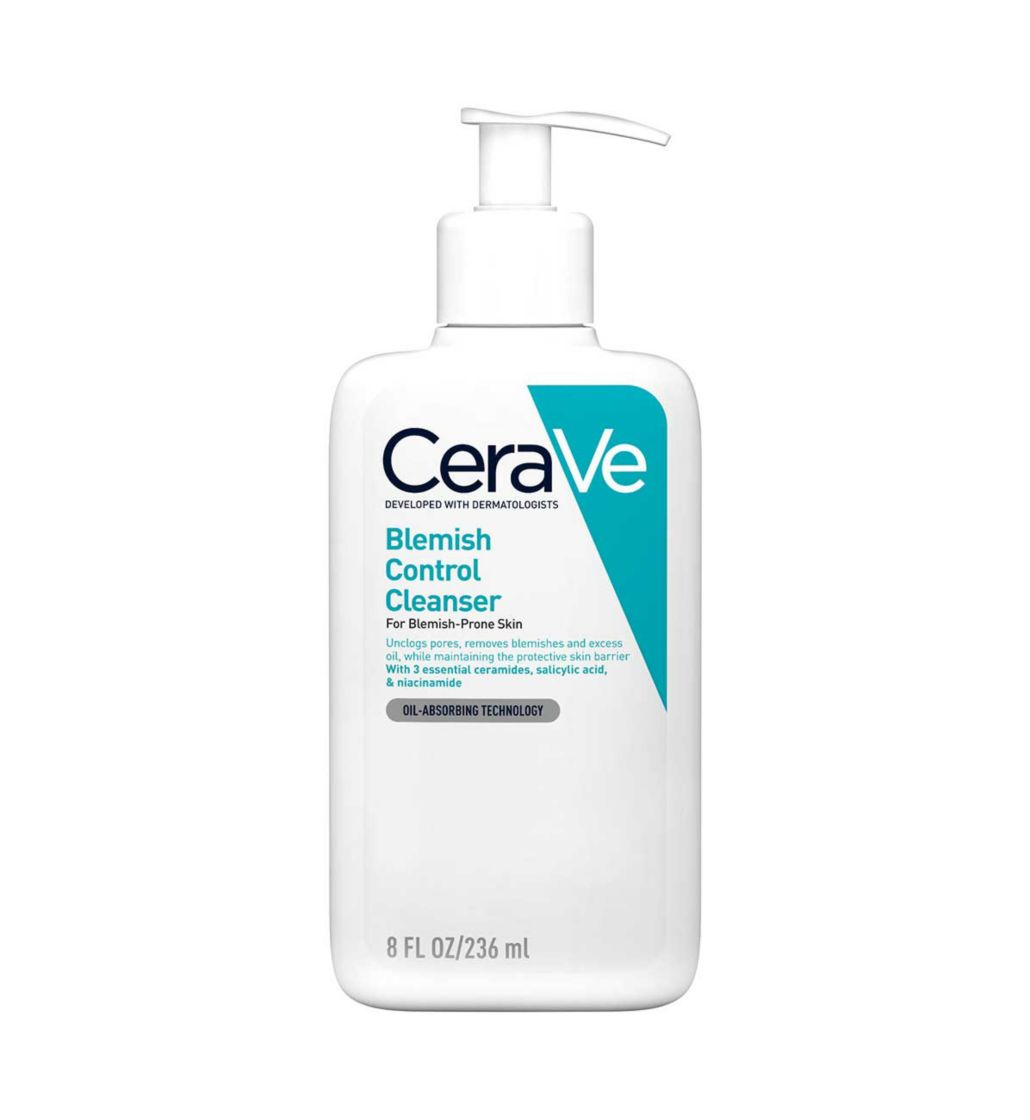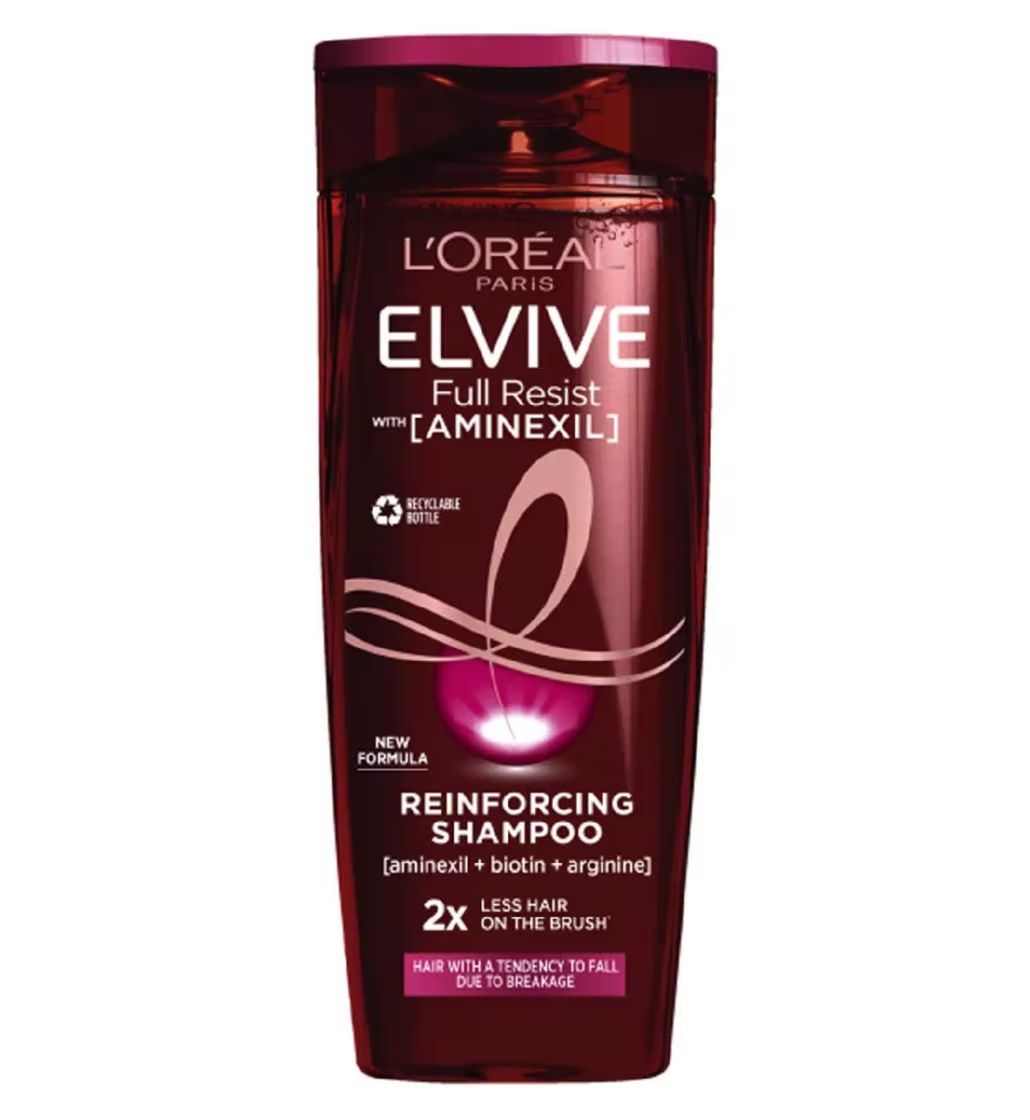TikTok’s Emulsifying Trick Changed The Way I Wash My Face & Hair
Photo: Courtesy of Jacqueline Kilikita
Welcome to Beauty In A Tik, where each week we put TikTok's viral beauty hacks and innovative trends to the test.
There are many things I freely admit to having no knowledge of whatsoever. NFTs? Don't get them. Mortgages? Make them make sense. But as R29's deputy beauty director, I like to think I have washing my face and shampooing my hair down to a T. At least I thought I did, until I scrolled through TikTok.
A video posted by skincare enthusiast James Bok, titled "How to wash your face properly", caught my attention first. "Most people do not emulsify their cleanser enough and apply it on their face making it look like soapy water," says James in the clip, which had an enormous 10.1 million views the last time I checked. "This is definitely not the right way of washing your face," continues James. Instead, James suggests wetting your face and emulsifying (combining two liquids) the cleanser by massaging it into the palms of your hands in a circular motion for around 15 seconds. If you're using a foaming cleanser in particular, emulsifying creates a richer lather. James then cleanses their face for a full minute before rinsing away the suds.
AdvertisementADVERTISEMENT
@james.bok Taking my time cleansing has been a gamechanger for me #skincare #skincareroutine #cleansing #skintok #menskincare #menshygiene #skincaretips #skincare101 ♬ girls like me don't cry (sped up) - thuy
In the same scroll, I came across a video by board-certified dermatologist Shereene Idriss, MD with 5.7 million views. "You guys have been washing your faces all wrong," she says. After removing her makeup with micellar water-soaked cotton pads, Dr Idriss takes her favourite cleanser and warms it up in her hands with a drop of water. Like James, her cleanser becomes a creamy emulsion. She washes her face and removes the product with a damp washcloth.
Both videos reminded me of something similar I had seen last year in regard to shampoo. Trichologist-in-training Abbey Yung recommends emulsifying shampoo in your hands before applying it to your wet hair. She claims that this will help to spread the product and cleanse evenly. Abbey even hints that not cleansing your hair in this way might be the reason why it gets greasy quickly.
@shereeneidriss How to wash your face #facewash #cleanser #washyourface #basicskincareroutine #cleanselikeaderm #dermatologist #shereeneidriss @ShereeneIdriss ♬ Smooth Operator (Single Version) - Sade
Three is a trend so I had to put this emulsifying trick to the test. First, on my skin. I've had a few breakouts recently so I've been using CeraVe Blemish Control Cleanser, £13, in both the morning and the evening. This is a foaming cleanser and is easy to emulsify in your hands. (A cream cleanser is unlikely to emulsify in the same way.) "Emulsifying is the mixing of two ingredients," says Dr Sabina Hanoman-Singh, skin expert and aesthetic doctor at CREO Clinic. "You’re forcing them to combine," she adds.
AdvertisementADVERTISEMENT
What causes emulsifying — or foaming — is surfactants like sodium lauryl and sodium laureth sulphate, explains consultant dermatologist and British Skin Foundation spokesperson Dr Angela Tewari. "They produce gas bubbles in the liquid and this results in a foam." Dr Tewari points out that not everyone will benefit from a foaming cleanser, particularly if your skin is dry or very sensitive. For those with oily skin, enlarged pores and breakouts, though, a foaming cleanser is a good option.
I squeezed a little cleanser into the palm of my hand, added some drops of water and, like Dr Idriss, rubbed my hands together for much longer than I usually would. This resulted in a rich, velvety foam. Dr Hanoman-Singh says that emulsifying enhances the spreadability of the product across the skin, hair or scalp, and it certainly helped. Instead of dripping down my arms or neck, the product transformed into a cushiony lather that allowed me to really cleanse those typically tricky-to-reach areas, like my under-eyes and around my nose.
@abbeyyung This makes the HUGEST difference! #shampoohacks #shampoohair #hairwash #hairwashday #learnhow ♬ STAY - The Kid LAROI & Justin Bieber
I'm not a fan of washcloths so I've been splashing away the soapy residue with tepid water. Somehow my face feels cleaner and my skin looks more radiant. The latter could be down to a handful of things, of course, such as the retinoid I'm using in conjunction with this cleansing method, but I can't deny that emulsifying my cleanser properly makes for a more enjoyable experience.
AdvertisementADVERTISEMENT
As for whether this technique is actually better for your skin, the jury is still out. Dr Hanoman-Singh told me that it'll help your cleanser penetrate deeper into the pores — and that's what it feels like it's doing. However, Dr Tewari says that evidence to support the benefits is lacking. "There's no reason [why emulsifying] would make a difference," she told me. "Whether you foam [your cleanser] or you don't, it still contains the same amount of cleansing substances."
@refinery29 We tested the benefits of emulsifying our cleanser and shampoo so you don’t have to. #emulsion #skincare #shampootok ♬ Midnight - whoisazar!
There's no evidence it can take more stuff off, either, adds Dr Tewari. "The foam is essentially the surfactant producing more air in the cleanser — that's literally what it is. It doesn’t mean it cleanses better." Dr Tewari mostly recommends cream cleansers to her patients as they can be a little less irritating than foaming cleansers. That said, if emulsifying makes your cleansing process more enjoyable, as it does mine, Dr Tewari says to go for it.
Having reaped the benefits on my skin, I turned my attention to shampoo. I know I'm not the only one to squeeze the product directly onto my scalp when washing my hair but soon-to-be trichologist Abbey has seen the science, and emulsifying your shampoo first seems to help distribute the shampoo suds evenly, potentially cutting through oil better. I've been using L'Oréal Paris Elvive Full Resist Anti Hair-Fall Shampoo With Aminexil, £6.99, which I've noticed has reduced hair-shedding considerably. Plus, it smells incredible.
AdvertisementADVERTISEMENT
Photo: Courtesy of Jacqueline Kilikita
Emulsifying the shampoo in wet hands generated a whipped foam that was actually much easier to massage into my roots and over my scalp. Sometimes, especially during the first cleanse, I have struggled to get most shampoos to lather up. That could be down to not saturating my hair with enough water but creating the bubbles in my hands, rather than on my scalp, sped things up considerably. I can't say it has reduced the frequency with which I need to wash my hair but it does save a little time.
Again, the experts are not in alignment when it comes to whether you should emulsify your shampoo first or not. "I think it’s better to [emulsify the shampoo] on the scalp itself because as you’re making the air bubbles, you’re taking away the dirt as well," says Dr Tewari. "It's the hair that needs cleaning, not your hands," she adds. "Start on your scalp first [because the] oil is what you [want to target]." Dr Tewari also recommends a single cleanse because it's very easy to over-wash your scalp. "Once you've shampooed your scalp, focus on the ends and then wash away the shampoo with warm water — not very hot water," she concludes.
In regard to washing my face, the emulsifying trick is something I'll be doing going forward, just because it feels so much better. Whether or not it provides a deeper cleanse, I can't say for certain. If I've learned anything, it's that emulsifying your skincare or haircare isn't exactly a must; it's entirely down to personal preference.
At Refinery29, we’re here to help you navigate this overwhelming world of stuff. All of our market picks are independently selected and curated by the editorial team. All product details reflect the price and availability at the time of publication. If you buy or click on something we link to on our site, Refinery29 may earn commission.
AdvertisementADVERTISEMENT









